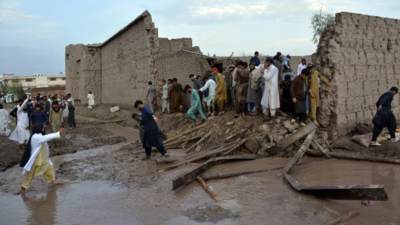
Heavy rainfall in eastern Afghanistan has resulted in catastrophic consequences, leaving at least 40 people dead and over 230 injured. The torrential downpour, which began earlier this week, triggered flash floods and landslides in several districts of Nangarhar province.
According to reports from local authorities and humanitarian agencies, the worst-hit areas include Surkh Rod district and other parts of Nangarhar, where entire communities have been ravaged by the natural disaster. Homes have been destroyed, roads washed away, and power lines severed, exacerbating the already dire situation for residents.
Emergency response teams, including those from the Afghan Red Crescent Society and international organizations such as the World Food Program (WFP), have been mobilized to provide relief efforts. Rescue operations are ongoing to evacuate stranded individuals and provide medical assistance to the injured.
In addition to the human toll, the heavy rains have also inflicted significant damage to infrastructure, disrupting essential services and communication networks. The full extent of the devastation is still being assessed as authorities struggle to reach remote and inaccessible areas cut off by the flooding.
The recent heavy rains in eastern Afghanistan highlight the region's vulnerability to natural disasters, compounded by inadequate infrastructure and limited disaster preparedness. With ongoing conflicts and political instability further complicating relief efforts, the situation remains precarious for thousands of affected families.
As rescue and recovery efforts continue, the international community is urged to extend support to Afghanistan during this critical time. Immediate humanitarian aid is crucial to providing shelter, food, and medical supplies to those affected by the disaster.


0 Comments